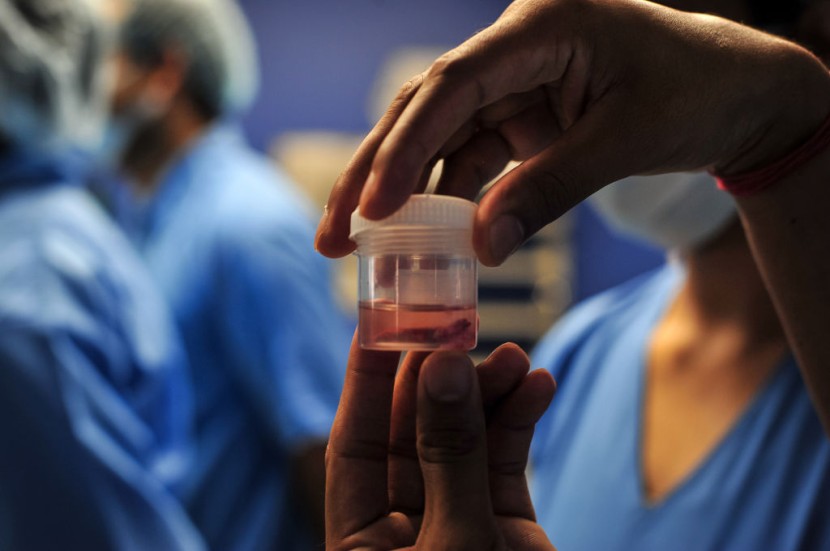
The newest occurrence of green fungus in Madhya Pradesh has sparked a new health issue in the country, as India faces a second wave of the coronavirus pandemic and black fungus infections. In Indore, Madhya Pradesh, a 34-year-old COVID-19 patient was recently diagnosed with a green fungus infection.
The man was subsequently flown from Indore to the Hinduja hospital in Mumbai for treatment. He had recovered from COVID-19 and had a test on suspicion of contracting the deadly black fungus infection, according to Dr. Ravi Dosi, head of the Department of Chest Diseases at Sri Aurobindo Institute of Medical Sciences (SAIMS). Instead, he was diagnosed to have a green fungus or Aspergillosis infection in his lungs, sinuses, and blood.
What is Aspergillosis, and how does the green fungus affect you? Who is at risk? The following is what we know about the rare infection:
What is green fungus?
Per Livemint, the green fungus is the most recent addition to the previously recorded black, white, and yellow fungus cases. The first instance of the infection was discovered in Indore, Madhya Pradesh (MP). Doctors are investigating the specifics of this new fungal variant. Although this is MP's first case, the medical community is concerned about other parts of the country.
Green fungus, commonly known as Aspergillosis, is caused by a prevalent mold, which may thrive both indoors and out. High temperature and nasal bleeding are possible symptoms of the infection. According to Dr. Dosi, the green fungus can also cause significant weight loss and weakness.
He went on to say that additional research was needed to see if the nature of the green fungus infection in COVID-19 survivors differed from that of other patients. For example, many people inhale Aspergillus spores daily without becoming unwell.
Green, black, white, and yellow fungal infections are not unusual, and they are not exclusive to the COVID-19 virus, Business Today via MSN reported. However, being linked to COVID -19 has forced them into the attention like never before.
Who are at risk and how to avoid it?
According to the CDC, those with weaker immune systems, such as COVID-19 survivors or those with lung diseases, are more likely to have health problems as a result of the infection, including those who have asthma, cystic fibrosis, tuberculosis, sarcoidosis, or chronic obstructive pulmonary disease (COPD). However, these rare fungal infections may only be avoided by practicing proper hygiene, including oral and physical cleanliness.
Avoid places with a lot of dust and polluted water that has been kept. If you can't avoid these places, protect yourself by using a N95 respirator.
Avoid activities that require you to come into close contact with soil or dust. Wash your face and hands with soap and water as often as possible, especially if they have been exposed to filth or dust.
Green fungus symptoms
The CDC says different kinds of green fungus infection have different symptoms, as per The Quint:
Allergic bronchopulmonary Aspergillosis (ABPA):
Allergic bronchopulmonary aspergillosis is an uncommon lung problem caused by severe allergic reaction when exposed to a type of fungus called Aspergillus. Here is the symptoms if infected with green fungus:
- Cough
- Shortness of breath
- Wheezing
- Fever (in rare cases)
Aspergilloma ("fungus ball" ):
Fungus ball is a noninvasive mycosis of the paranasal sinuses that affects immunocompetent people and usually only affects one sinus. Although fungi are common saprophytes in the nasal cavities and paranasal sinuses, they can cause sinonasal infections under certain circumstances.
- Cough
- Coughing up blood
- Shortness of breath
Chronic pulmonary Aspergillosis:
Is a long-term fungal infection caused by Aspergillus fumigatus and other members of the genus Aspergillus. The word covers a wide range of illness manifestations, from an aspergilloma-a clump of Aspergillus mold in the lungs-to a subacute, invasive type known as chronic necrotizing pulmonary aspergillosis, which affects patients with a compromised immune system. Many patients with chronic pulmonary aspergillosis have a lung disease underlying it, such as asthma, tuberculosis, allergic bronchopulmonary aspergillosis, or lung cancer.
- Cough (with blood in some cases)
- Shortness of breath
- Weight loss
- Fatigue
Allergic Aspergillus sinusitis:
Is a kind of allergic fungal sinusitis (AFS), a chronic rhinosinusitis with pathological features comparable to allergic bronchopulmonary aspergillosis (ABPA). There are no evidence-based diagnostic or treatment criteria, and the cause is unknown.
- Headache
- Reduced ability to smell
- Stuffiness
- Runny nose
Invasive Aspergillosis:
Invasive aspergillosis (IA) is caused by the fungus Aspergillus fumigatus, a common and sometimes fatal side effect of chemotherapy and bone marrow transplantation, with significant death and morbidity rates.
- Fever
- Cough
- Shortness of breath
- Chest pain
- If the infection spreads from the lungs to other areas of the body, additional symptoms may appear.
Related Article: Third COVID-19 Wave to Hit India, Only 5% of Population Are Vaccinated
@YouTube








